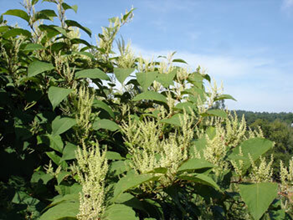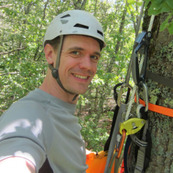|
Apply by:?Nov. 17, 2023
The Department of Agriculture, Conservation and Forestry is accepting applications to fill an Entomology Technician in the Bureau of Forestry, Forest Health and Monitoring Division, based within the Baileyville area.
This is technical services work involving the detection, evaluation, impact assessment of entomological/pathological problems, and inventorying the health and condition of Maine?s forests. ?Work is performed in the field under a variety of adverse conditions, including walking several miles per day over varied terrain with a backpack weighing up to 35 pounds. Working alone in remote locations is required for certain tasks. Statewide travel is required. Work is performed under limited supervision.
More Information
This article is from Maine Bureau of Parks and Lands November 2023 bulletin.
If you are planning to decorate with wreaths and garlands during the holiday season, please be sure that they do not include invasive plants that harm Maine's natural areas and wildlife.
Bittersweet? ? ? ? ? ? ? ? ? ? ? ? ? ? ? ? ? ? ? ? ? ? ? ? ? ? ? Multiflora Rose
The two most common invasive plants used in wreaths and garlands are bittersweet, and multiflora rose. Both plants cause severe environmental damage by invading open fields, forests, wetlands, meadows, and backyards and crowding out native plants.
- Bittersweet kills mature trees through strangling.
- Multiflora rose can form impenetrable thickets that outcompete native plant species.
Both species are difficult to control and easily re-sprout after cutting. The placement of invasive plant wreaths and garlands outdoors or disposing of them in compost piles can lead to new infestations. Birds and other animals also eat the fruit and spread viable seeds into vulnerable forest areas.
Report It - Wreaths may not be sold that contain these or any of the 63 plant species banned for importation and sale in Maine. (30 species on this list take effect on January 1, 2024) Report locations where banned plants are sold to the Maine Horticulture Program at [email protected] or by calling 207-287-3891.?
Habitat Friendly Alternatives "Look for decorations with native species in them like winterberry holly, red twig dogwood, or American mountain ash," recommends Maine State Horticulturist Gary Fish.
 |
|
A very common statewide invasive is knotweed. Once planted as garden specimens and for erosion control, it is now seen frequently along roadsides. Once established, knotweed spreads quickly. When you spot it, control it. Learn more about knotweed and some of the people working to control it in this Deep Dive: Invasives article by Maine Public Reporter Patty Wight. |
~ Courtesy posting from the Maine Bureau of Parks and Lands (BPL).
To subscribe to the BPL newsletter text BPLNEWS to 888-514-7527 or use this subscription link.
DATE:
December 5, 2023
TIME:
2-3:30 PM ET
Attend EPA's Webinar: Beech Leaf and Bark Diseases: Emerging Threats to Beech Trees
The iconic American beech tree has been a prized commodity for centuries by people for its dense, shady canopy, form, stature, smooth bark, and the many nuts that benefit wildlife. There are two main beech-specific diseases of concern: beech leaf disease (BLD) and beech bark disease (BBD). These diseases also attack the European and other beech varieties. Both debilitating diseases can result in death to the tree. This free webinar will address disease identification and recommendations for preventing and treating the beech trees to ensure survival.
- Learn the origin of beech leaf disease, survey efforts, current range and monitoring efforts.
- Learn how to identify?beech leaf disease and beech blight disease.?
- Learn about current research and integrated pest management strategies to manage these conditions.
Presenters
|
Cameron McIntire
Ph.D., Plant Pathologist, U.S. Forest Service.
|
|
 |
|
Paulo Vieira
Ph.D., Plant Pathologist, U.S. Department of Agriculture, Agricultural Research Service.
|
|
 |
|
